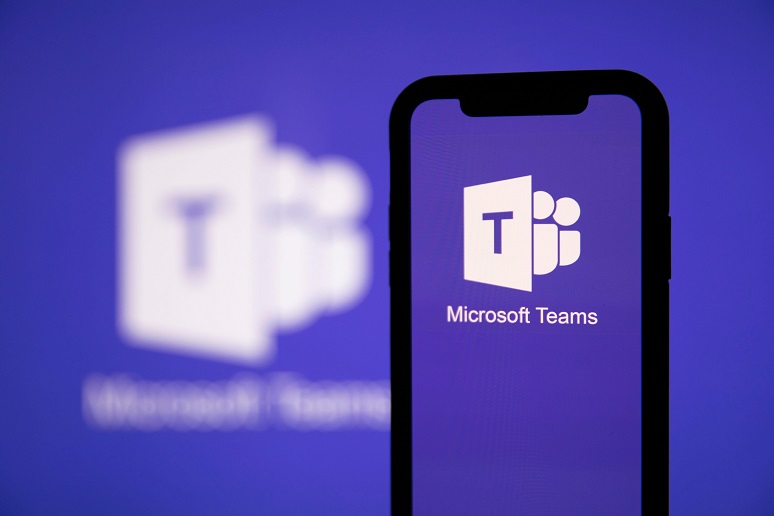Last month, Microsoft finally shared detailed adoption numbers for Teams Phone System, noting on its earnings call that there are approximately 12 million active licenses in use. While an impressive number, that represents a fairly small fraction of the overall 270 million active Microsoft Teams seats noted earlier this year (as discussed by my fellow No Jitter contributor Kevin Kieller
here).
The Teams Phone System market is still in its infancy and as such, those customers using Teams for messaging, meetings, and internal calling today are likely facing a critical question: Does it make sense to add PSTN calling to their Teams platform?
That’s a good thing.
In the last year or so the Teams ecosystem for enabling PSTN calling has exploded in both delivery options as well as service provider choice. To determine whether it’s a good idea to add PSTN calling to their Teams platform, IT leaders should answer the following questions:
Do I want all my eggs in the Microsoft basket?
The first choice to make is whether to use Microsoft’s Teams Phone System feature set, or whether you want to integrate a third-party calling provider. Unless you already have E5 Microsoft 365 licenses, the Teams Phone System approach will require additional licensing, typically around $8 per-user, plus a separate fee for PSTN connectivity (I’ll dig more deeply into that in a bit).
Being able to provide a single end-user app, and to manage calling through the same Teams Operator Console you use to manage other Teams features may be attractive, but it does come at an additional cost. And, if there’s a Teams outage, you’ll lose not only messaging and meetings, but also calling. Note that
Teams’ Phone SLA only guarantees 99.99% of uptime, which is a bit lower than the five 9’s (99.999%) typically guaranteed by other cloud calling providers.
Teams’ native PSTN calling feature sets may also not be as robust as those offered by other providers who offer features such as SMS, ACD, IVR, outbound dialing, scripting, and other contact center-specific options.
If not Microsoft, then who?
If you’ve decided against Teams as your PSTN calling platform, the next step is to evaluate the alternatives. Typically, this means looking at solutions from the many cloud calling / UCaaS providers on the market. Here you’ll want to pay special attention to their ability to integrate into the Teams app, and thus make things as seamless as possible for your users. What you don’t want is to require employees to shift to another UI when they want to make, or when they receive, a phone call. Fortunately, most of the leading UCaaS providers offer Teams integration, though specific features and approaches vary, and Teams integration on mobile devices isn’t generally available.
OK, I’m good with Microsoft. Now what?
If you have decided that the potential additional cost, and other factors are outweighed by end-user and management simplicity that Teams Phone System offers, you still have decisions to make. Most notably is how to connect Teams to the PSTN?
This is where the market has truly, and rapidly, evolved over the last year. Here, you have three options from Microsoft:
- Microsoft Calling Plan: Offered as a stand-alone option for enterprise licenses, and a bundled license with the Phone System Feature set for smaller companies, Calling Plan provides a fixed number of monthly available minutes for domestic or international calling. Calling Plan, as our research has shown, is typically about 60% more expensive than the other options I’ll describe below.
- Operator Connect: Now in general availability and accessed through the Teams Operator Console, Operator Connect allows Teams Phone System customers the ability to easily select a PSTN provider and configure that provider directly from within the same interface they use to manage Teams. The number of available partners has exponentially grown over the last year, and will continue to do so as Microsoft continues to make it easier for partners to deliver services through Operator Connect
- Direct Routing: Best suited for large, multi-national organizations with separate existing PSTN connectivity contracts in different areas, Direct Routing enables organizations to maintain control over dialing plans and call routing policies to optimize their telecom costs. Direct Routing services themselves are rapidly evolving from ones centered around reuse of existing on-premises session border controllers (SBCs) to ones that provide SBC as a managed feature hosted by the Direct Routing provider, typically within the Microsoft Azure cloud.
Operator Connect and Direct Routing have the advantage of allowing customers to shop for the lowest rate, as well as compare features such as availability, APIs, E911 management, and additional value-added features.
Is there only one best solution?
The beauty of the various options for connecting Microsoft Teams Phone System to the PSTN is that there’s no need for a one-size-fits all approach. A company could buy Calling Plan minutes for a few small offices where it makes sense to simplify deployment and management, then use Direct Routing for the rest of the dial plan. Or someone using a third-party UcaaS provider today could take advantage of that UcaaS provider’s Direct Routing services (currently offered by vendors including Dialpad, 8x8, RingCentral, and Vonage) to provision Teams Phone System licenses where it wants, while allowing those who need advanced calling features to stay on the UcaaS provider, all managed through a unified dial plan. Or, companies can mix and match Operator Connect providers, picking the best in each region.
So now what?
Picking the right Microsoft Teams Phone System PSTN approach requires some due diligence. To recap, it’s a three-step process:
- Consider if the benefits of simplification outweigh the potential risks and costs.
- Move on to evaluating the potential options, including integration of third-party UCaaS provider services, or PSTN connectivity options including Microsoft’s Calling Plan, Operator Connect, and Direct Routing.
- Understand that the market is continually changing, and the best decision today may not be the best one tomorrow.










